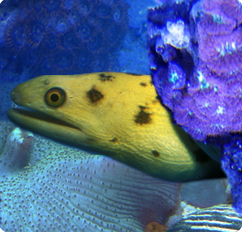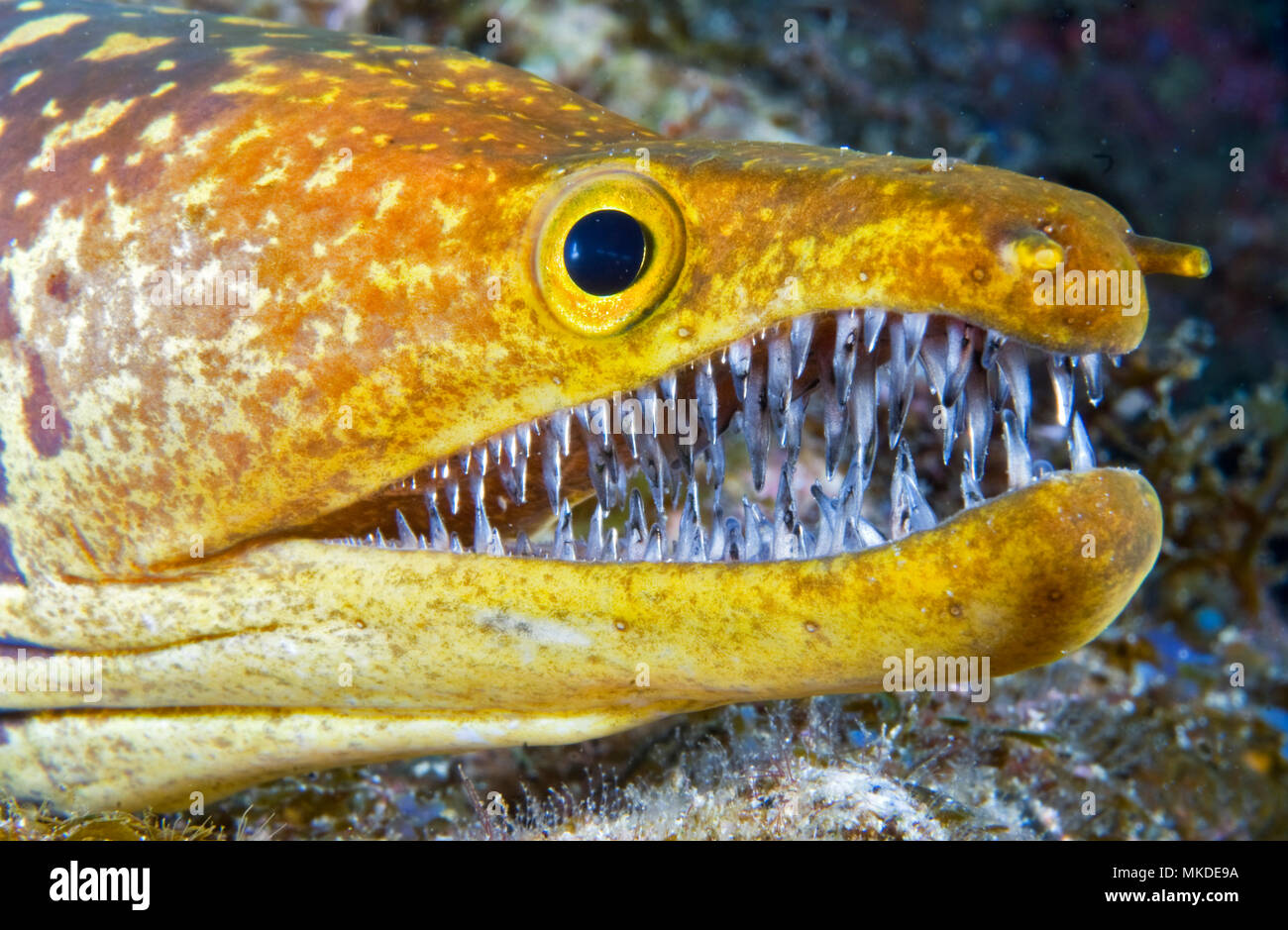Canary Eel
If you're a fan of exotic aquatic life, then you've probably heard of the canary eel. With its striking yellow color and elongated body, this eel is a popular choice for saltwater aquarium enthusiasts. But there's more to this fascinating creature than meets the eye.
Pain Points
Despite its popularity, the canary eel is not the best choice for inexperienced fish owners. These eels are extremely aggressive and can be difficult to care for in captivity. They require a specific diet and environment in order to thrive, and their aggressive nature can make it difficult to introduce other fish into their habitat.
Target of Canary Eel
The canary eel is native to tropical waters off the coast of South America and the Caribbean. They are carnivores and typically feed on fish and crustaceans. In the wild, they can grow up to six feet long, but in captivity, they usually reach only half that size.
Summary
If you're considering adding a canary eel to your aquarium, it's important to do your research first. Make sure you have the proper equipment and setup to accommodate the eel's needs, and be prepared to dedicate time and effort to its care. With proper attention and care, the canary eel can be a stunning and fascinating addition to your aquatic collection.
Canary Eel Target
My personal experience with canary eels began when I visited a local aquarium and saw one swimming gracefully in a tank. I was immediately drawn to its bright yellow hue and sleek form. As I learned more about this species, I was fascinated by their unique hunting tactics and their ability to adapt to their environment. Their long, snake-like bodies make them one of the most visually striking eels in the ocean.

The Aggressive Nature of Canary Eels
However, owning a canary eel requires a great deal of expertise and care. They can be extremely aggressive towards other fish and are known to prey on smaller creatures in their tank. This means that they require a large tank with plenty of hiding spots to prevent them from attacking other fish in their space. Additionally, their specialized diet can be difficult to provide, as they require live prey to maintain their health and wellbeing.

Caring for a Canary Eel
In order to keep your canary eel healthy and happy, it's important to provide them with a large tank that is at least six feet long. They also require plenty of hiding spots in the form of rocks, caves, and other structures. In terms of diet, canary eels require live prey such as shrimp, crab, and fish. It's important to provide them with a varied and balanced diet to ensure their nutritional needs are met.
Behavior and Habitat
Canary eels are typically found in rocky reef environments in tropical waters. They are nocturnal creatures and are most active at night. During the day, they will hide in rocks and crevices to avoid detection by predators. When threatened, they will open their jaws wide to expose their razor-sharp teeth, which can be quite intimidating for other fish.
Question and Answer
Q: How big do canary eels grow in captivity?
A: Typically, canary eels grow to about three feet in captivity, compared to their six-foot length in the wild.
Q: Are canary eels suitable for beginners?
A: No, canary eels are extremely aggressive and require a great deal of expertise to care for properly.
Q: What do canary eels eat?
A: Canary eels are carnivorous and typically feed on fish and crustaceans. They require live prey to maintain their health.
Q: Where can I purchase a canary eel?
A: Canary eels are available for purchase at some specialty fish stores and online retailers. However, it's important to do your research and ensure you have the proper setup to care for one before purchasing.
Conclusion
Canary eels are fascinating creatures that require a great deal of expertise to care for properly. If you're considering adding one to your collection, make sure you have the right equipment and knowledge to meet their specific needs. With the proper care and attention, a canary eel can be a stunning and rewarding addition to your aquarium.
Gallery
Yellow Canary Moray Eel, Golden Moray Eel - Gymnothorax Miliaris

Photo Credit by: bing.com / moray canary eel miliaris gymnothorax yellow fish golden scientific name eels
'Its Cavernous Jaw Full Of Teeth Like Glittering Icicles.' Eel Off The

Photo Credit by: bing.com / eel moray fangtooth eels canaria snake natureisfuckinglit anatina canary
Canary Fish. Tiger Moray (Enchelycore Anatina), Tenerife, Canary

Photo Credit by: bing.com / moray tiger canary tenerife islands alamy fish
Yellow Canary Eel - Brazil - Eels - Saltwater Fish

Photo Credit by: bing.com / eel yellow canary brazil fish
Absolutely Fish Photo Gallery - Eels
Photo Credit by: bing.com / eels eel canary slideshow show fish

0 Response to "Canary Eel"
Post a Comment